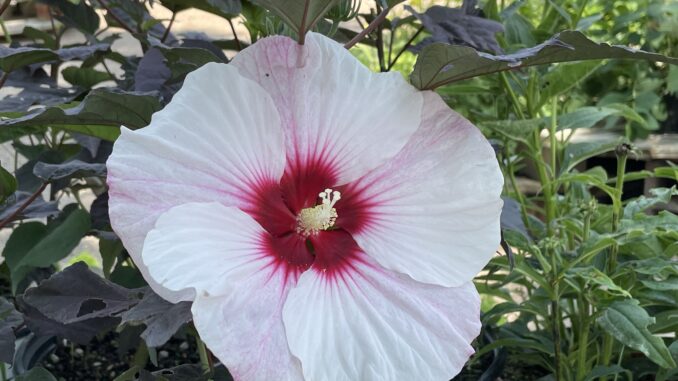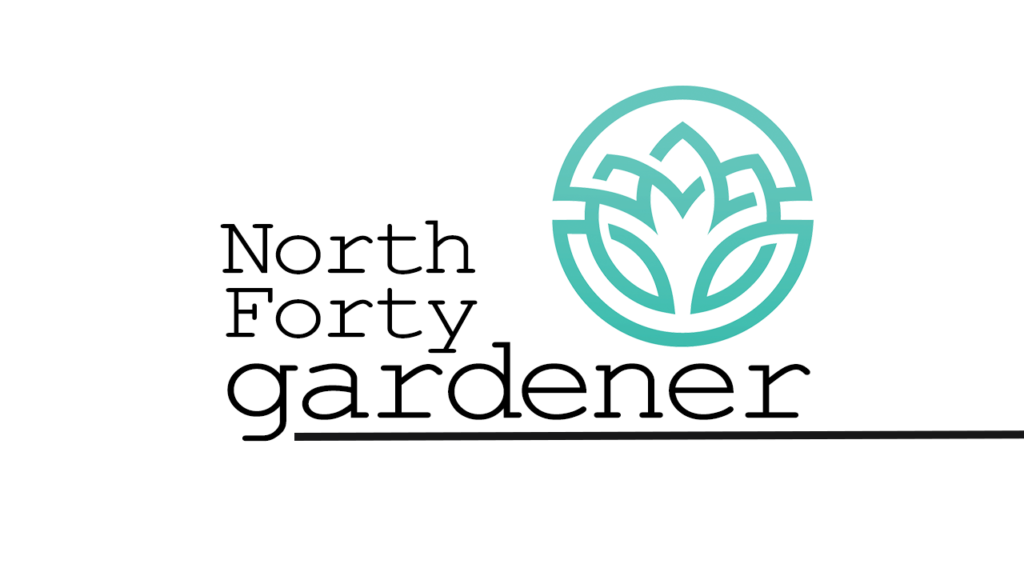

Alex Tisthammer | Fort Collins Nursery
Hibiscus moscheutos, also known as hardy hibiscus, doesn’t look like it should survive in dry, hot Colorado with its huge tropical blooms and large glossy leaves. Luckily for us, it can and does perform wonderfully in the right location! Hardy hibiscus, sometimes called swamp rose mallow, are native to wet areas like swamps, marshes, and moist meadows, so they need lots of water. Because of this, it tolerates our clay soils as long as it stays moist, making it the perfect plant for areas heavy in clay or where there is irrigation runoff, like from a lawn. Plant it where it will get lots of sun, at least 6-8 hours. It’s usually hard to find plants that can live with this combination of needs, making this the perfect plant for a difficult job.
Although hibiscus overwinters well, mulch is recommended to help retain moisture and give a little more warmth over the winter. They die back to the ground every year, unlike the Rose of Sharon, a woody shrub in the same genus with smaller flowers that get much larger. In the late fall, once the stalks have gone brown, you can cut the stems back, or do so in the spring when you are doing spring clean up.
This perennial likes to sleep late, so don’t disturb or dig them up thinking they’re dead! They can emerge as late as June if it has been cooler, like this year. It is worth the wait, though, because once they start growing, they will shoot up very quickly to their full size of 3-5 feet.
If you want to have something blooming in that area in the spring when they are not awake yet, do an underplanting of spring bulbs like Snowdrops (Galanthus), Camassia, or Summer Snowflake (Leucojum aestivum) that can handle wetter soils. They will be going dormant about when the hibiscus starts to wake up.
Their huge dinner plate-sized flowers typically appear in July and bloom until frost. They come in various colors; white, red, pink, and even a faint yellow in a new variety called ‘French Vanilla’. At the height of their bloom period, they can produce 20 flowers per day!

They also can have different colored leaves, green or a deep burgundy. The burgundy leaves make the flower colors pop and supply a very interesting leaf color for the landscape. Last but certainly not least, they are great for hummingbirds, bees, and butterflies. They supply nectar to ruby-throated hummingbirds and other insects and are a host plant for the caterpillar of painted lady butterflies.
Interested in seeing some in the landscape? The CSU Trial Gardens has some beautiful hibiscus planted throughout their perennial beds and along College Ave. Make sure to go in July to see them at the height of their season. It’s hard to resist this perennial, so hopefully, you have the perfect low spot or that one place that doesn’t seem to dry out to plant a hardy hibiscus!
Support Northern Colorado Journalism
Show your support for North Forty News by helping us produce more content. It's a kind and simple gesture that will help us continue to bring more content to you.
BONUS - Donors get a link in their receipt to sign up for our once-per-week instant text messaging alert. Get your e-copy of North Forty News the moment it is released!
Click to Donate
